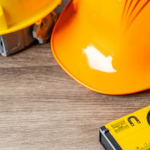The Key to Health and Productivity
Workplace ergonomics is essential in today’s professional landscape, ensuring the well-being, as well as the productivity of employees, has become more critical than ever. Workplace ergonomics and Display Screen Equipment (DSE) assessments play a pivotal role in achieving this delicate balance. In this blog post, we will delve into the significance of workplace ergonomics and the importance of conducting DSE assessments to create a safer and more comfortable working environment.
What is workplace Ergonomics?
Ergonomics involves the science of designing and arranging workplaces, products, and systems to fit the people who use them. The goal is to minimise physical stress and strain while maximising efficiency and comfort. When employees work in an ergonomic environment, they are less likely to experience discomfort, fatigue, and musculoskeletal disorders that can lead to absenteeism and decreased productivity.
The key aspects of Workplace Ergonomics
Workstation Design: Properly designing workstations with adjustable chairs, desks, and monitors can help employees maintain optimal posture, reducing the risk of back pain, neck strain, and repetitive stress injuries.
Keyboard and Mouse Placement: Placing keyboards and mice at the correct height and distance from the user can prevent wrist and hand discomfort.
Proper Lighting: Adequate lighting that minimises glare and reduces eye strain is crucial. Natural light and adjustable lighting systems contribute to a healthier workspace.
Monitor Positioning: Monitors should be at eye level and positioned at an arm’s length to avoid straining the neck and eyes.
Regular Breaks: Encouraging regular breaks and incorporating stretching exercises can prevent stiffness and promote blood circulation.

The Significance of DSE Assessments
A Display Screen Equipment (DSE) assessment is a systematic evaluation of an employee’s workstation to ensure that it conforms to ergonomic standards. These assessments are essential for identifying potential risks and making necessary adjustments to prevent discomfort and injuries.
The Steps of a DSE Asessment:
1. Identification: Identify employees who use DSE regularly as part of their job, and start inspecting their workstation
2. Assessment: Evaluate the employee’s workstation, taking note of furniture, equipment, lighting, and layout.
3. Consultation: Engage with the employee to understand their comfort levels, any discomfort experienced, and their suggestions for improvements.
4. Adjustments: Implement necessary adjustments, such as changing chair height, adjusting monitor position, and providing ergonomic accessories.
5. Follow-Up: Regularly review and update assessments as job tasks or employee needs change.
Benefits of DSE Assessments:
- Customised Solutions: DSE assessments provide tailored solutions for each employee, taking into account their unique needs and tasks.
- Prevention of Health Issues: By addressing ergonomic issues promptly, DSE assessments can prevent the development of musculoskeletal disorders, eyestrain, and other health problems.
- Enhanced Productivity: Employees who work comfortably and without discomfort are more likely to stay focused and maintain high levels of productivity.
- Legal Compliance: Many jurisdictions require employers to conduct DSE assessments to comply with health and safety regulations.

Conclusion
Prioritising workplace ergonomics through effective DSE assessments is a powerful investment in the health, comfort, and productivity of your employees. By designing workspaces that encourage proper posture, comfort, and efficiency, businesses can create a positive work environment that benefits both the workforce and the bottom line. Remember, a well-designed workspace isn’t just a perk; it’s a fundamental component of a thriving and successful organisation.
For more Information on this subject please contact us either on 01924 261789 or email us at admin@ojsafety.co.uk.











